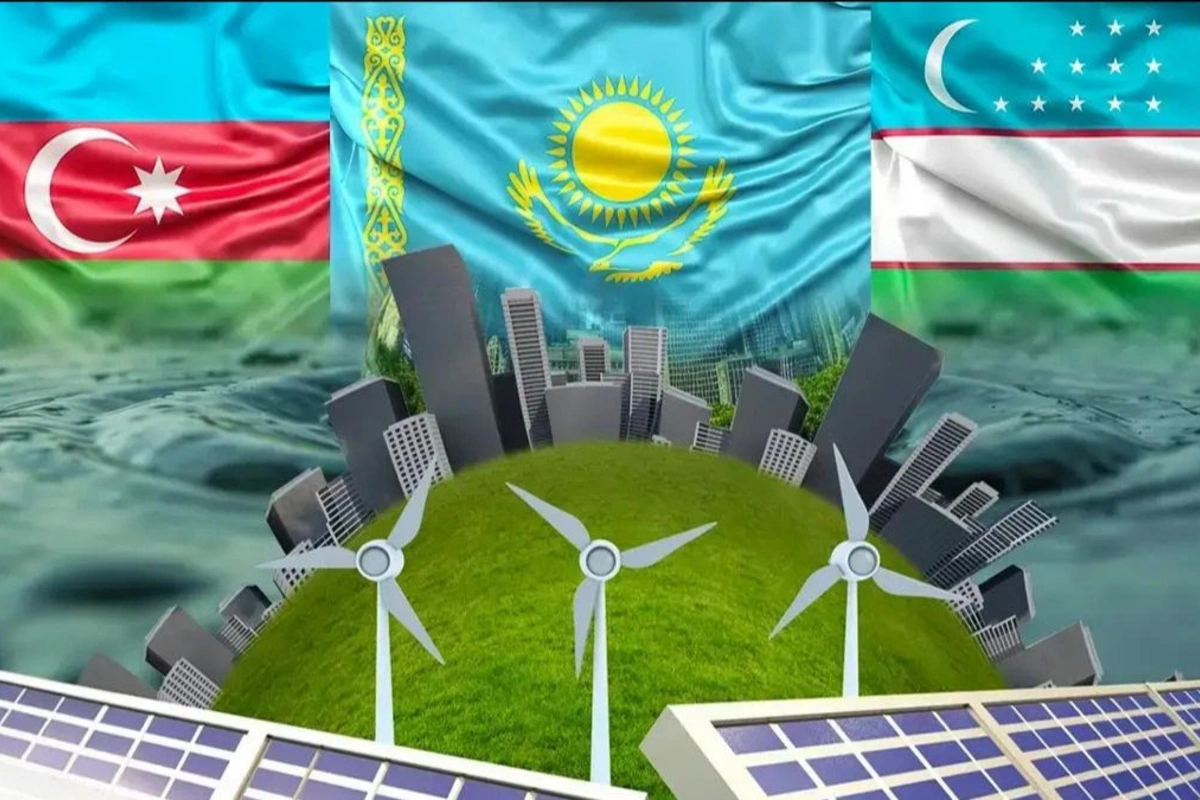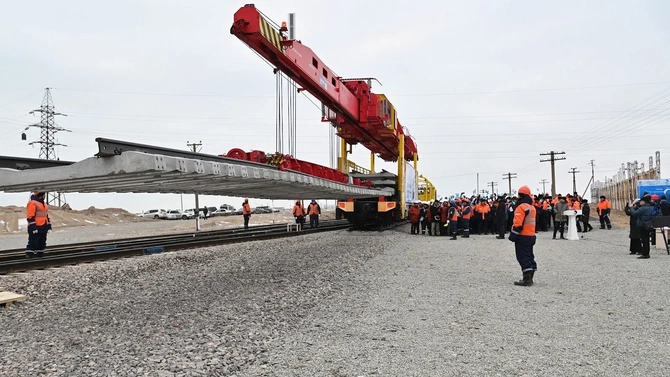
Collage credit: Kazinform/ Freepik
Azerbaijan, Kazakhstan, and Uzbekistan have signed an agreement on cooperation in the development and transmission of green energy, marking an important step toward a sustainable energy future for the region. Countries in Central Asia and the South Caucasus are increasingly showing interest in alternative energy sources, including solar and wind power, as well as hydrogen energy. However, despite the promising prospects, green energy remains more of a niche solution at this stage, applicable mainly in regions where the construction of traditional power transmission lines is economically unfeasible or technically challenging.
Currently, a key issue is the search for effective mechanisms to integrate green energy into the overall energy balance of these countries. Wind and solar power plants require substantial investment and present additional challenges in energy storage, as their output is unstable and depends on weather conditions. Therefore, the development of this sector in Azerbaijan, Kazakhstan, and Uzbekistan necessitates the creation of modern energy storage and transmission systems, leading to additional costs.
Another crucial aspect is the formation of a regional green energy market. For example, hydrogen production projects, which have been actively promoted in the EU and some Asian countries, are currently facing high production costs. The production of green hydrogen requires significant electricity input, and its transportation remains a complex technical challenge. At this stage, the most viable direction seems to be the creation of infrastructure for the commercialization of electricity generated at nuclear power plants. Both Kazakhstan and Uzbekistan have announced plans to construct nuclear power plants, which will ensure stable power generation and facilitate integration into the regional energy market.
In addition to the energy sector, Central Asian and South Caucasus countries continue to expand their transport infrastructure, which plays a crucial role in their economic strategies. Kazakhstan is heavily investing in modernizing its railway network and constructing new logistics hubs to significantly boost cargo transportation volumes between China and Europe. Key projects include the construction of additional railway lines along the Dostyk-Moyynty section, the Almaty bypass railway, and the Bakhty-Ayagoz route. These initiatives will optimize transit flows and reduce delivery times.

(Photo: primeminister.kz)
Additional efforts are being made in maritime logistics. The Kazakh port of Aktau is set to host a container hub with a handling capacity of up to 300,000 TEU, while the Kuryk port is undergoing the construction of a multifunctional terminal. Furthermore, dredging operations are being carried out in these ports to accommodate larger vessels. Kazakhstan is also involved in constructing a multimodal terminal in the Georgian port of Poti, which will strengthen transit connectivity between Central Asia and Europe.
Land-based routes are also seeing significant improvements. A crucial point is the Karasu border crossing between Kazakhstan and Kyrgyzstan, which is part of the Western Europe - Western China highway corridor. To enhance cargo flow, Kazakhstan and Uzbekistan are planning to establish a Center for Industrial Cooperation, facilitating joint production and subsequent exports. Additionally, a Eurasia Transborder Trade Center will be built in Oral (Uralsk), targeting trade with Russia and Eastern Europe.
Regarding the development of international transport corridors, a key challenge remains enhancing regional connectivity. In this context, the Middle Corridor is gaining increasing importance, as it accelerates cargo movement between China and Europe and unlocks new economic opportunities through transit revenue. Kazakhstan is positioning itself as a major transport and logistics hub, in line with the strategy outlined by President Kassym-Jomart Tokayev.
Azerbaijan, for its part, is also actively leveraging the Middle Corridor, aiming to become a key transit hub in the South Caucasus. The increased cargo flow through this route is expected to lower transportation costs, enhancing the competitiveness of goods transported between Kazakhstan, Uzbekistan, and Azerbaijan.
However, to fully unlock the potential of the Middle Corridor, it must be integrated with the Eurasian Logistics Framework, which serves as a comprehensive system of latitudinal and longitudinal transport corridors. In the future, this route could accommodate not only cargo from China but also goods from India, the Middle East, and Southeast Asia, ensuring additional diversification of logistics pathways and reinforcing Central Asia and the South Caucasus as major players in global trade.
Thus, the cooperation between Azerbaijan, Kazakhstan, and Uzbekistan in green energy and transport infrastructure holds significant promise but requires a comprehensive approach. On the one hand, it is crucial to ensure the economic viability of new energy solutions; on the other, developing transport infrastructure will enable these countries to integrate into global trade networks. Only by combining these factors can the nations of Central Asia and the South Caucasus achieve sustainable economic growth and development.
Share on social media